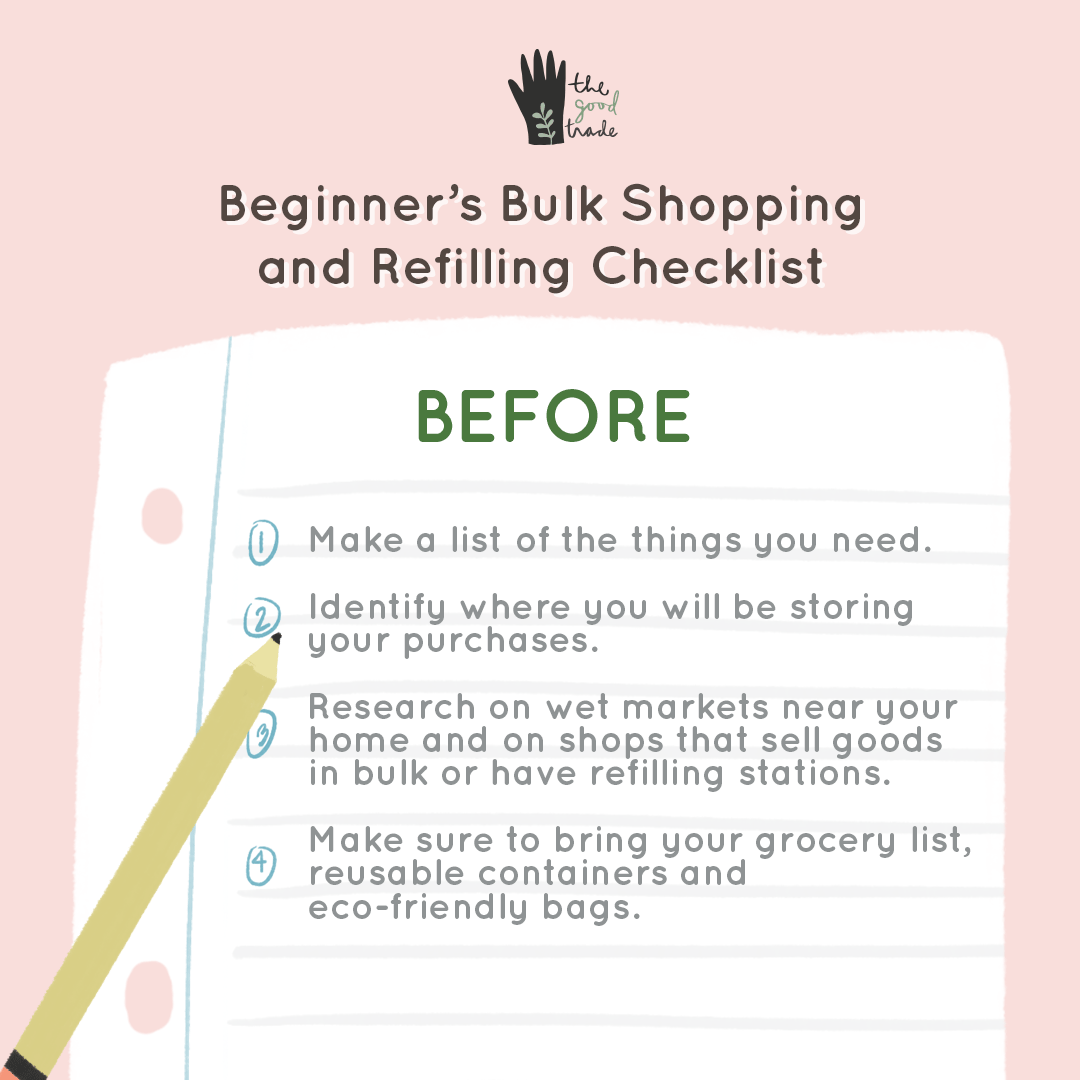Living in our ‘new normal’ means making several adjustments to our daily routines: we have to be more mindful and intentional of the things we do and the places we go to. One adjustment is limiting the number of times we go out to do our grocery shopping. It sounds like a daunting task, especially when we have to consider where we will store those items and if our budgets will be enough for such big purchases. Worry not, here are some simple and easy steps from the Good Trade PH for those who want to start their journey to becoming bulk and refill shoppers in Metro Manila.

Before
- Make a list of the things you need. Keep in mind that buying in bulk means you will be storing these goods for longer than a week or a month, so only choose items that have a long shelf life and that you use on a regular basis. Pantry staples include rice, lentils, beans, spices and nuts. It is also a good idea to purchase cleaning materials and toiletries, such as shampoo and soap, in bulk. With enough stocks of these essentials, you will minimize the need to make return trips to stores, saving you time and transportation costs in the process.
- Identify where you will be storing your purchases. This covers both shelf space and actual containers. It is best to keep food items in a cool and dry place away from direct sunlight in order to preserve them for longer. For containers, make sure they can be sealed tight. Repurpose old glass jars or plastic containers into storage; choose transparent containers so it is easy for you to know when you are running low on something and need to restock. Alternatively, you may purchase these storage items, such as from local brand AtoZeroWaste.
- Research on wet markets or palengkes near your home and on shops that sell goods in bulk or have refilling stations. Some of these shops even have online stores so you do not need to physically go there. Knowing the items these shops carry will help you determine if you can buy everything in one place or if you need to make two or more stops in your shopping run. The Good Trade will be launching an online website soon.
- If you will be heading out to buy your goods, make sure to bring your grocery list, reusable containers and eco-friendly bags. Bringing your own containers and bags will eliminate the need to take home unnecessary packaging from the store or to make additional purchases there.

During
- Weigh your empty containers. If you do not yet know the weight of your reusable containers, check their weight before you load them up with goods. Most bulk stores and refilling stations have weighing scales for this. Stores charge based on the weight of the goods you buy and do not include the weight of your container in the price.
- Fill up your containers based on how much you need. Shopping in bulk stores and refilling stations gives you the flexibility to choose the amount and weight of items based on your consumption rate and on your budget.
- If you do not have your own containers, some stores sell empty ones which you can use on site. When in a wet market or palengke, always ask if they can use paper bags instead of plastic.

After
- Properly store your filled-up containers, or transfer the goods to more appropriate items for storage or to smaller bottles for everyday use.
- Monitor the usage of your goods to see how much lasts for how long. This will help you plan better for your next shopping trip.
We hope that these simple and actionable steps will help you get started on your bulk and refill shopping journey and towards a more sustainable and eco-friendly lifestyle.
Share your bulk and refill shopping experiences and tips in the comments section below!






